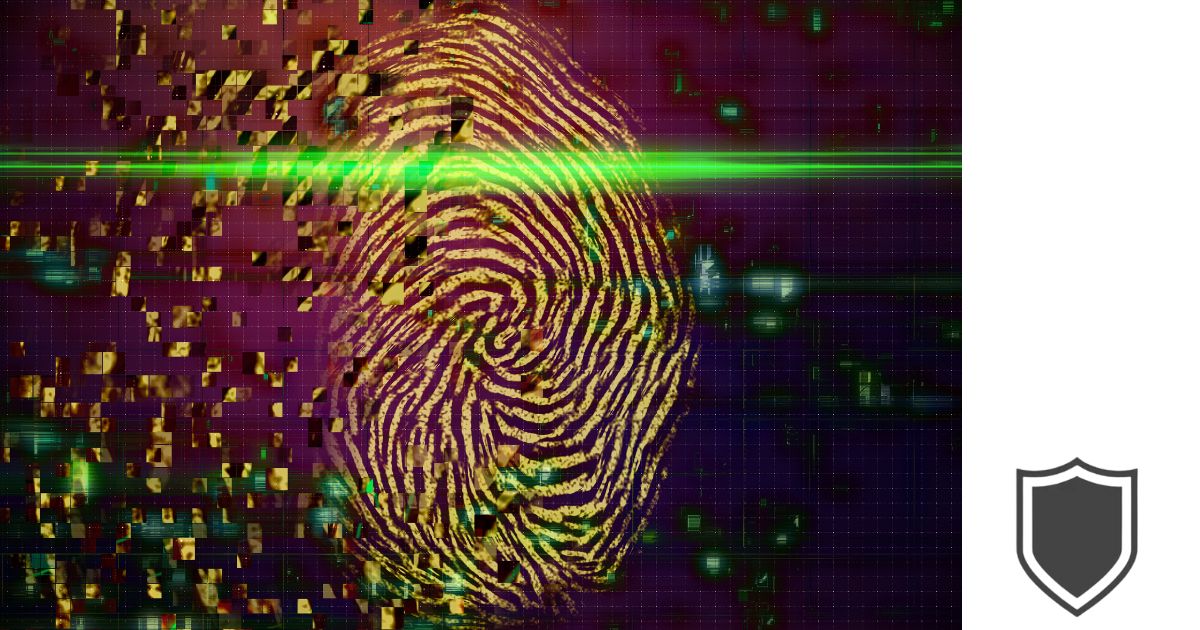Hello everyone, I’m Dr. Edward Baldwin, embarking on a conversation that’s increasingly vital in our digital age: safeguarding your identity. In this essential Guide to Identity Theft Protection Services, we’re going to explore strategies to protect yourself from one of the fastest-growing crimes of our time – identity theft.
In a world where our personal details are constantly shared online, the risk of having your identity stolen is more than just a possibility; it’s a reality that affects millions each year. From bank fraud to credit damage, the consequences can be severe. But fear not! With the right identity theft protection services, you can fortify your digital and financial presence against these invisible invaders.
Whether you’re a frequent online shopper, a social media enthusiast, or just someone who values their privacy, understanding how to protect your identity is crucial. So, let’s dive in and discover how to keep your personal information under lock and key. It’s time to make your identity bulletproof!
Table of Contents
Understanding Identity Theft

Identity theft is a serious and rapidly growing problem. I’ll help you understand what it is, the types it takes, and how it usually happens.
Types of Identity Theft
- Financial Identity Theft: This is when someone uses my personal information to access financial benefits, such as my credit card or bank account.
- Medical Identity Theft: Thieves may steal my personal details to obtain medical services, which can lead to false medical records in my name.
- Criminal Identity Theft: If someone commits a crime and uses my identity when apprehended by law enforcement, that’s criminal identity theft.
- Synthetic Identity Theft: This occurs when a criminal combines real and fake information to create a new identity, partially based on my personal data.
How Identity Theft Occurs
Online Methods:
- Phishing: Malicious emails pretending to be from reputable sources to trick me into revealing personal information.
- Data Breaches: When sensitive data is stolen from a system without the authorization to access it.
Offline Methods:
- Mail Theft: Someone can physically steal mail such as credit card statements, pre-approved credit offers, or new checks.
- Dumpster Diving: Thieves sift through trash to find documents with personal information.
Common Tactics Used by Identity Thieves
- Skimming devices on ATMs and gas station pumps to intercept my credit card details.
- Creating fake websites that resemble legitimate businesses to capture my personal information.
- Using social engineering to manipulate or trick me into divulging confidential or personal information.
By staying informed about these aspects of identity theft, I am better positioned to protect myself from becoming a victim.
Evaluating Identity Theft Protection Services

When selecting an identity theft protection service, I consider features offered and compare various providers to ensure I choose the best fit for my needs.
Features of Protection Services
The core features of identity theft protection services usually include monitoring of personal information on the internet and public records, alerts to potential threats, and recovery assistance in case of identity theft. For instance, LifeLock offers a range of monitoring services that scrutinize credit applications, social security number usage, and more to provide early warnings. IdentityForce includes features such as credit monitoring and alerts for suspicious financial activity on different accounts. Meanwhile, a company like IDNotify may offer similar services, often with variations in comprehensiveness and pricing.
Comparing Service Providers
When comparing service providers, I look at coverage levels, customer service reputability, and additional benefits like insurance policies or family plans. Aura, my personal favorite, stands out with their offerings that protect not just my identity but also my finances and other sensitive data, supported by a $1M insurance policy covering eligible losses. Notably, you can try out Aura’s services with a 14-day trial. On the other hand, LifeLock has a strong reputation with a range of plans that might include VPN and cloud storage, while IdentityForce is usually praised for its user-friendly interface and robust monitoring features.
Evaluating each provider side by side, it’s essential to weigh the costs against the breadth of monitoring and recovery services to determine which best addresses my individual concerns about identity security.
Implementation of Protection Measures

In safeguarding against identity theft, it’s critical to be proactive. Here’s how I set up defenses to protect my personal information.
Setting up Account Alerts
I make sure to activate account alerts on all my financial accounts. This way, I receive notifications for any transactions or changes. Here’s my typical setup process:
- Step 1: Log into my online banking portal.
- Step 2: Navigate to the ‘Account Alerts’ or ‘Security Notifications’ section.
- Step 3: Set alerts for various triggers, such as:
- Large transactions over a specified amount.
- Any foreign transactions.
- Changes to personal details or passwords.
- Step 4: Choose how to receive alerts (email, text messages, or push notifications).
Securing Personal Data Online
To secure my personal data, I follow these measures:
- Encryption: I use encrypted connections (HTTPS) when browsing or submitting information online.
- Privacy Settings: I adjust privacy settings on social media to limit what’s shared publicly.
- Anti-Virus Software: I have reliable anti-virus software installed on my devices to prevent malware that could be used to steal my data.
Using Secure Passwords
Strong, unique passwords are my first defense against hacking attempts. Here’s how I manage them:
- Complexity: Each password includes a mix of upper and lower case letters, numbers, and symbols.
- Password Managers: I utilize a reputable password manager to generate and store complex passwords securely.
- Two-Factor Authentication: Whenever available, I enable two-factor authentication for an added layer of security.
Steps to Take if You are a Victim

When I discover I’m a victim of identity theft, it’s critical to act quickly to minimize damage and start the recovery process. Here I’ll outline specific actions to take immediately, legal options available to me, and steps to restore my identity.
Immediate Actions to Minimize Damage
Contact Financial Institutions:
- I’ll immediately contact my bank and credit card companies to report fraud. This typically involves freezing or closing affected accounts.
Place Fraud Alerts:
- I’ll place a fraud alert with one of the three credit bureaus (Equifax, Experian, or TransUnion). When I do this, the bureau I contacted must inform the other two.
Report to the Federal Trade Commission (FTC):
- I can file a report with the FTC through IdentityTheft.gov. They provide a personal recovery plan after I complete the report.
File a Police Report:
- I should file a report with my local police department, providing them with the FTC Identity Theft Report and any other evidence of the theft.
Legal Recourse for Victims
Contact the IRS:
- If I suspect tax-related identity theft, I should respond immediately to any IRS notice; call the number provided.
Review Credit Reports:
- I’ll obtain copies of my credit reports from all three bureaus and review them for discrepancies. I can do this for free once per year.
Consider a Credit Freeze:
- A credit freeze prevents creditors from accessing my credit report, making it harder for an identity thief to open new accounts in my name.
Restoring Your Identity
Correct my Credit Reports:
- I’ll reach out to the three credit bureaus to dispute and remove fraudulent transactions or errors from my credit reports.
Continue Monitoring:
- After the initial steps, I’ll continue to monitor my credit and accounts to watch for any new signs of fraud. I may consider using a credit monitoring service to assist with this.
Update Passwords:
- It’s essential to change passwords for my online accounts, especially if the same password was used on multiple sites.
Preventing Identity Theft
In this section, I’ll guide you through some effective measures you can adopt to shield yourself from identity theft. These include simple habits you can build into your daily routine and advanced tools that serve as your technological guardians.
Best Practices for Individuals
Create Strong, Unique Passwords: For each online account, I make sure to use a password that’s a mix of letters, numbers, and symbols. Here’s a tip – avoid common phrases and include a variety of characters.
Regularly Monitor Your Accounts: I check my bank and credit card statements frequently for any unauthorized transactions. If something seems off, I don’t hesitate to investigate.
Shred Sensitive Documents: Before I toss anything that has my personal information, like bank statements or utility bills, I make sure to shred them. This prevents dumpster divers from getting their hands on my data.
Be Wary of Phishing Scams: I’m cautious about emails or phone calls requesting personal information. If an offer seems too good to be true, or a call seems suspicious, I do not provide any personal details.
Secure Your Social Security Number (SSN): I never carry my Social Security card in my wallet. Also, giving out my SSN is something I do only when absolutely necessary.
Technological Tools for Protection
Use Anti-Virus and Anti-Malware Software: I regularly update my computer with the latest security software to protect against malicious attacks designed to steal personal information.
Enable Two-Factor Authentication: Whenever available, I activate two-factor authentication for an additional layer of security beyond just a password.
Identity Theft Protection Services: To stay ahead, I subscribe to an identity theft protection service that monitors various data points and alerts me of any suspicious activity concerning my identity.
Utilize a Secure Connection: I always make sure my internet connection is secure, especially when I’m conducting sensitive transactions. Public Wi-Fi is a no-go for me when accessing important accounts.
Remember, implementing these practices and tools in your life can significantly tighten your security against identity threats.
The Last Word
And that brings us to the end of our deep dive into the world of identity protection. “Bulletproof Your Identity: Essential Identity Theft Protection Services” has hopefully equipped you with the knowledge and tools to fortify your personal information against the ever-present threat of identity theft. Remember, in this digital era, being proactive is the key to safeguarding your identity.
The journey to protect yourself doesn’t end here. It’s an ongoing process of staying informed, vigilant, and one step ahead of potential threats. Regularly update your passwords, monitor your financial statements, and consider enlisting the help of a trusted identity theft protection service.
As we part ways, take these insights and strategies with you. Embrace the power of prevention and stay safe in the digital world. Your identity is not just another piece of data; it’s your digital fingerprint, unique and valuable. Keep it secure, and navigate the online world with confidence and peace of mind.
Identity Theft Protection Services FAQs

In this section, I’ll address some common inquiries about identity theft protection services to help you stay informed and make the best choice for safeguarding your personal information.
What features should I look for in an identity theft protection service?
I recommend looking for a service that offers comprehensive monitoring, including credit, Social Security Number, and dark web surveillance. It’s also wise to check if they provide insurance and restoration services in case your identity is compromised.
How do family plans for identity theft protection differ from individual plans?
Family plans often include features that cater specifically to households, like monitoring for unlimited children’s identities and social media, as well as the adults in the family. These plans are designed to protect everyone under one umbrella policy.
What are the pros and cons of free identity theft protection services compared to paid ones?
Free services can offer basic monitoring and alerts, but they may lack extensive coverage and insurance options. Paid services, on the other hand, typically offer more robust protection, such as comprehensive monitoring and recovery assistance, but at a cost.
Can identity theft protection services help me recover if my identity is already compromised?
Yes, many services include recovery assistance, which can guide you through the steps of reclaiming your identity and might also cover financial losses up to a certain amount based on the policy.
How do identity theft protection companies ensure my personal information is kept safe?
Reputable companies use high-level encryption and follow strict privacy protocols to secure your data. They often undergo regular security audits to ensure your information is protected against unauthorized access.
With multiple companies offering identity theft protection, how do I decide which one is most suitable for my needs?
When deciding, I consider the company’s reputation, customer service track record, the breadth of their monitoring services, and how they handle privacy. I also compare costs and benefits. Reading reviews and checking for accreditation like an A+ rating from the Better Business Bureau can be helpful.








